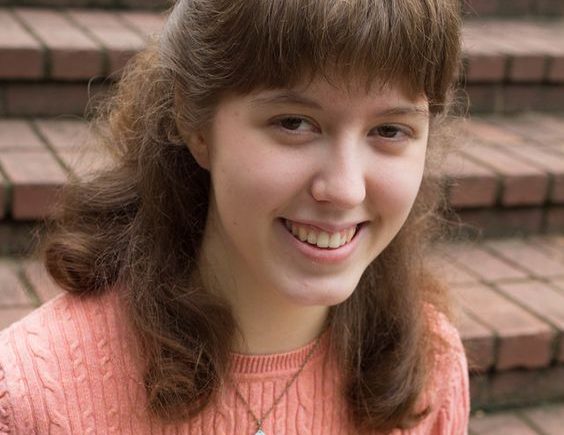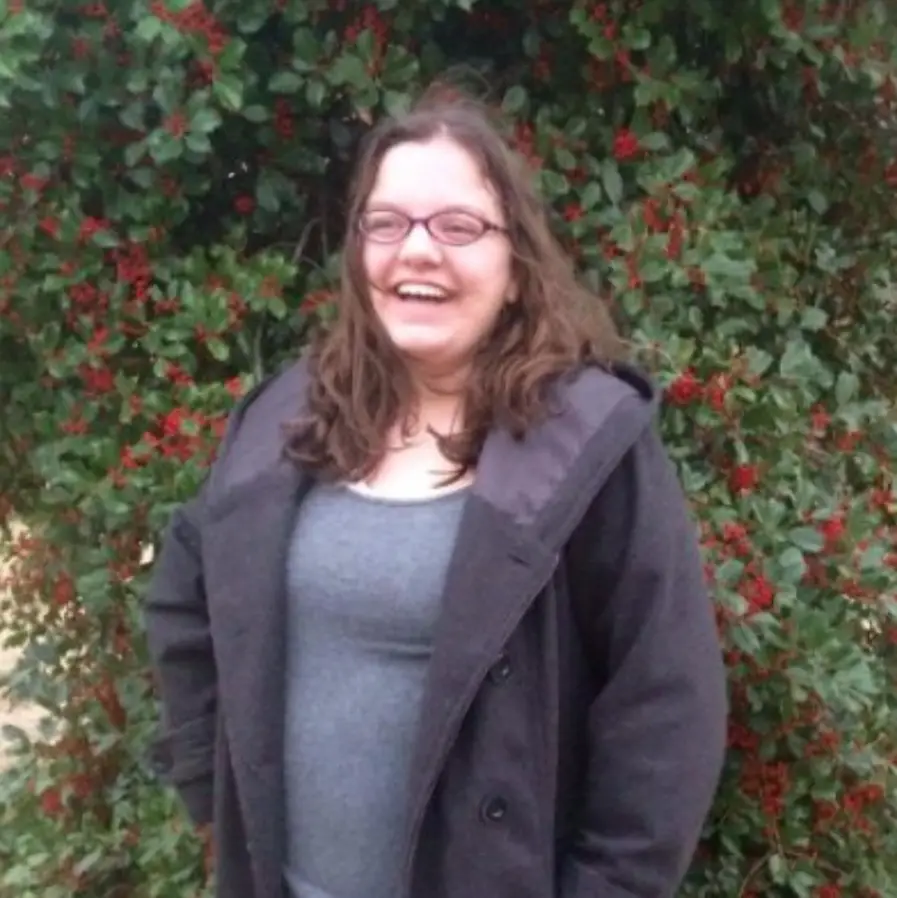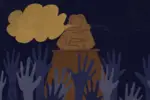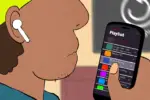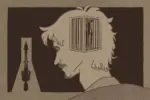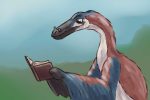Helen Coats, a writer currently attending Purdue University as a freshman, already has publications in bioStories, Toasted Cheese and Gingerbread House. Her most recent story follows a young boy, Jeremy, who learns about the passing of his friend, Asher. The story, called “Our New Lives,” is featured in issue No. 53 of One Teen Story.
Her passion for writing comes from the love of stories her parents gave her as a child, where she found her favorite children and young adult stories. Wishing to replicate the same magic her favorite books possessed, Coats’ main goal is creating characters that feel like friends instead of just names in a story.
Emily Craig: Did “Our New Lives” come from a personal experience, and how did you capture such raw emotions into a beautifully written story?
Helen Coats: The experience is from real events (bits and pieces). In middle school, my teacher’s son passed away due to carbon monoxide poisoning, and seeing his friends struggle with a young boy passing away so soon and suddenly left an impact on me.
I am an only child, but I can’t imagine that happening to my best friend’s younger brothers. I try to see them as siblings as well and imagining any one of them passing away is a lot to process. So that is why my story is about siblings — the older sibling of somebody who struggles with losing a friend.
EC: Have you always dreamed of being a writer?
HC: Being a writer has always been my dream. When I was small, it wasn’t a concrete thing or a job goal. Writing is a love and passion of mine even before the word “writer” came to mind. Between the ages of four and five, my dad and I made little “books” out of construction paper, and he did the illustrations while also writing down what I said.
Creating little stories began our thing. My mom did some, too, but mostly just my dad and me.
Growing up, both my parents always read to me, so I have always had this great love of stories and the people who wrote them. Books such as “A Wrinkle in Time,” “The Boxcar Children,” “The Magic Treehouse,” “The Littles,” “The Borrowers” and everything by Lois Lowry, I just love them. I was like, “These people are creating these worlds and characters that I almost see as my friends, and I want to do that, too!”
EC: How long do you spend creating your stories?
HC: I guess it just depends on the story or what the world is. Of course, if I am writing something like fantasy, I am probably spending more time with the world than I would in a story like “Our New Lives,” a fiction-based tale with real-world aspects. I can just kind of grab different bits of setting.
But if I am writing a fantasy setting, I want to make sure things work together, and things make sense, that it is clear to the reader, so I spend more time thinking about themes just by themselves.
I usually feel the times when I do spend time thinking about a theme going into writing, I regret it because then my stories end up feeling stale, all the characters are fake and point towards a message. The characters’ dialogue feels weird; nothing feels right. I would rather try to create characters who end up encountering themes in their lives as we do in our lives.
We encounter death, mourning, happiness and everything, but we aren’t conscious of that. We don’t think about things; we don’t think about emotions in those terms. So I try to put characters in situations and see what organically comes out.
I’m kind of with J.R.R Tolkien; I love his work and he’s one of my models. He doesn’t like allegory, [which] I’ve never been a massive fan of. I do like the “Narnia” series even though I know it has some heavy elements of allegory.
But a lot of allegories that I am not a big fan of, to me, feels like a “color in the numbers” type of writing. I would rather just create my own stories and let the stories encounter scenes.
EC: What did your first publication feel like?
HC: At the age of 10, in 4H Aldo Leopold Project Grant (nature-based thing like girl/boy scouts) they had a writing contest about the honey bee’s dance that they do to communicate. I thought, “That sounds cool, I can write about that.” My very first publication and a perfect learning experience for me was with my essay, “Honey Bees Dance.”
Upon finishing my essay, I showed my work to my parents and they basically told me I had to write the whole paper over again. I didn’t understand, at the time, enough to not plagiarize whole sections of books I read about the topic during my research process. I threw a little fit, but they helped me and took the time to go back to rework my essay.
Restructuring, tearing apart and putting my writing back together so I could use my research without plagiarizing began a learning experience for me. After submitting the essay and not thinking much of the previous upset and redo, I ended up winning the contest at a state and national level.
This experience marks the first time I thought, “Hey, I could write, and people want to read it.” That still means a lot to me, ending with a publication in The National Bee Keepers Association newsletter. Just the experience of messing up so badly and having to learn to come out of that to create something worthwhile was satisfying.
EC: For the second paragraph of “Our New Lives,” how did the descriptions come about?
HC: My family and I have some friends that we like to visit who live on Wadmalaw Island in South Carolina — a beautiful location.
The area is kind of a haunting marsh land, which is where I drew inspiration from for Jeremy and Heather and their family’s home. Wadmalaw Island is full of trees, which is great with the beautiful Spanish moss. Also, I like to walk out there by myself when the atmosphere is quiet and kind of lovely and spooky.
Anyways, a storm did blow through there one time and there was Spanish moss everywhere on the ground. There were trees that went down in the water that I couldn’t see anymore, and I kind of just got the idea of, “What if there was an underwater tree and what would that look like?”
I don’t remember where I got the idea of describing the death: “I imagined a dead boy and thought of the details Mom must have been trying to spare Jeremy. How his lips must have gone blue, how his hair must have mingled with the tree’s Spanish moss, his bloated hands reaching up to catch the sun.”
Wadmalaw Island is definitely where the trees come from, although the storm in the story is more severe because in real life my friends didn’t evacuate as long nor was the flooding as bad.
EC: Is Heather and Nicole based on you and your best friend? If so, what was it like putting your personalities into the story? Did you add new little details to each of your characters?
HC: Nobody mirrors anybody in particular. The closest people are Chris and Wyatt; I know they are minor characters, but they have traits of my best friend’s little brothers.
Heather and Nicole aren’t my best friend and me. I don’t like to take whole personalities of people for my characters. Kind of for the same reason I don’t want to look at theme because the story ends up feeling not organic. I feel like when I try to make characters realistic, if I make them talk the way people do, they end up feeling faker then if I take some shortcuts.
So I don’t ever like to make a one-to-one comparison with somebody, but there are elements in characters from my life. Their personalities aren’t meant to represent my best friend and me, but their reaction and everything comes from things I understand.
I am not an artist, by any means, or visual artist, but I have a passion for something like Heather does for drawing and art. I try to put my passion for writing and acting into her passion.
One of my teachers in high school used to say to me, “Write what you know well enough to lie about” instead of “write what you know.” I like that a lot. For example, I don’t have siblings, so I can’t know what a brother and sister bond is like from experience.
Even though I can’t live the lives of these characters and I don’t know necessarily what they’re going through, I know somethings because we are all human and they have the same capacity for joy and sadness that I do.
EC: How did the drawing of Jeremy come about?
HC: I think about how I am with my passion as a writer when I am struggling with something, or something is on my mind. Sometimes I just need to write my thoughts in a notebook, especially if I am struggling with myself, which gives me that distance to help me calm down with whatever I am dealing with at the time.
I imagine if a visual artist is struggling with something that maybe they will use their art form as a means to clear their head. I thought [it] reasonable that Heather would sit down and start drawing her brother: “He was running toward or away from something, I hadn’t decided which. It started out as a realistic sketch, but when I started to fill in the top of his head, I found myself weaving lines that spiraled down from his skull and wrapped around his arms and legs, binding him as he ran.”
Also, this is kind of a way to show her feelings (without resorting to a dream scene) that is rooted in her character that continues to show in her art and builds that side of her personality. Plus, my roommate is a visual artist who is part of my inspiration for Heather. Visual art astounds me, and I appreciate people who can do that kind of work.
EC: How did you go about handling such heavy topics such as heartbreak, death and grief?
HC: I try not to focus [on] these topics as much as the relationship between the brother and sister. My favorite scene is when they are in the hotel and playing little things together, which tells the reader how close they are.
Heather is reminiscing on her bond with her little brother when the flood caused them to evacuate: “We watched funny YouTube videos on my phone, played hangman on pages of the Gideon Bible, flicked a quarter back and forth in a match of paper football on the bedside table, anything to keep us distracted. We stayed like that in the hotel for five whole days.”
When two people have a strong relationship and are always there for each other, and one shuts them out — this is a hard situation to handle. I wanted to capture that strong brother and sister bond and show how they learn to fall back together after tragedy strikes their lives.


